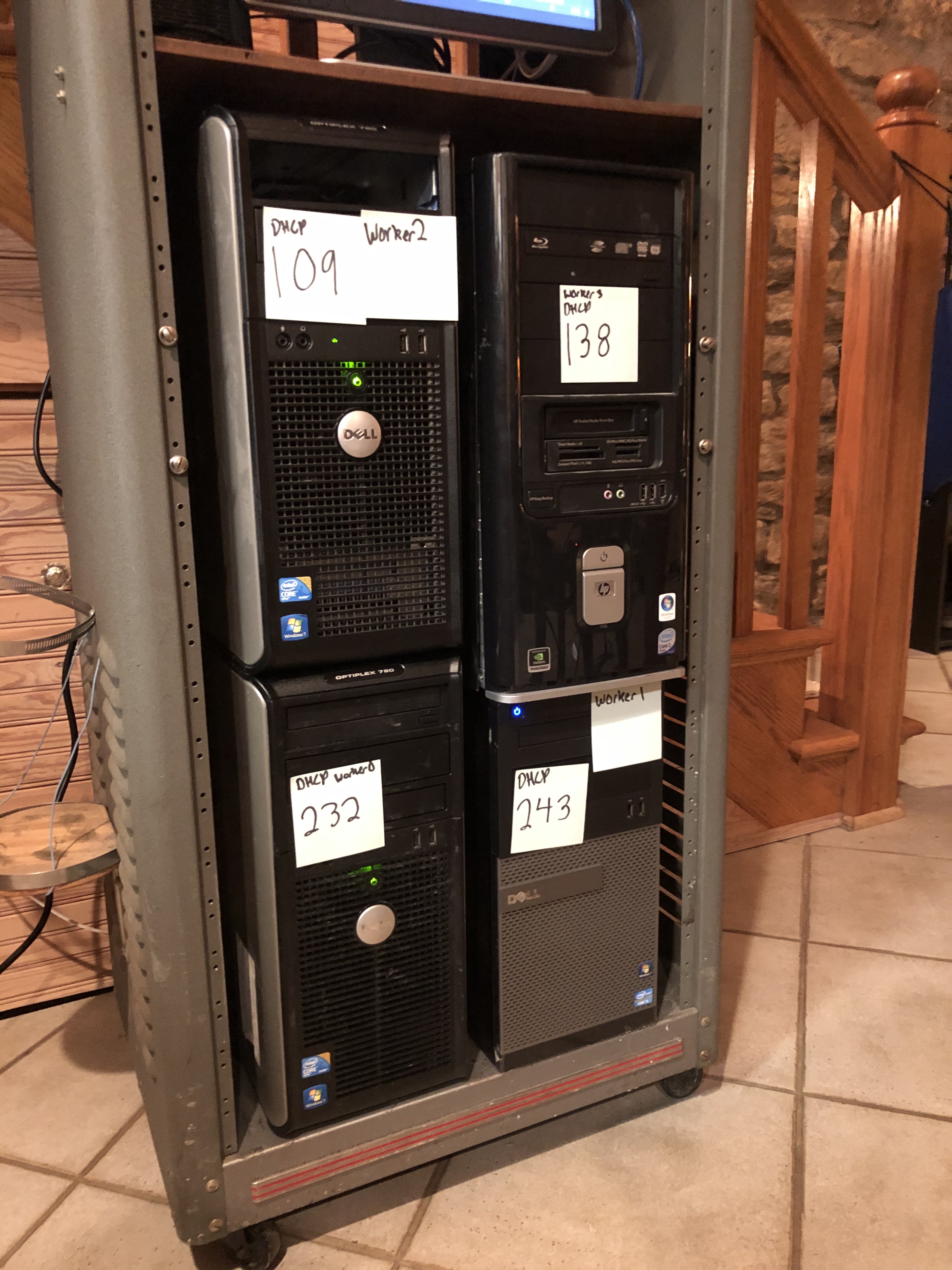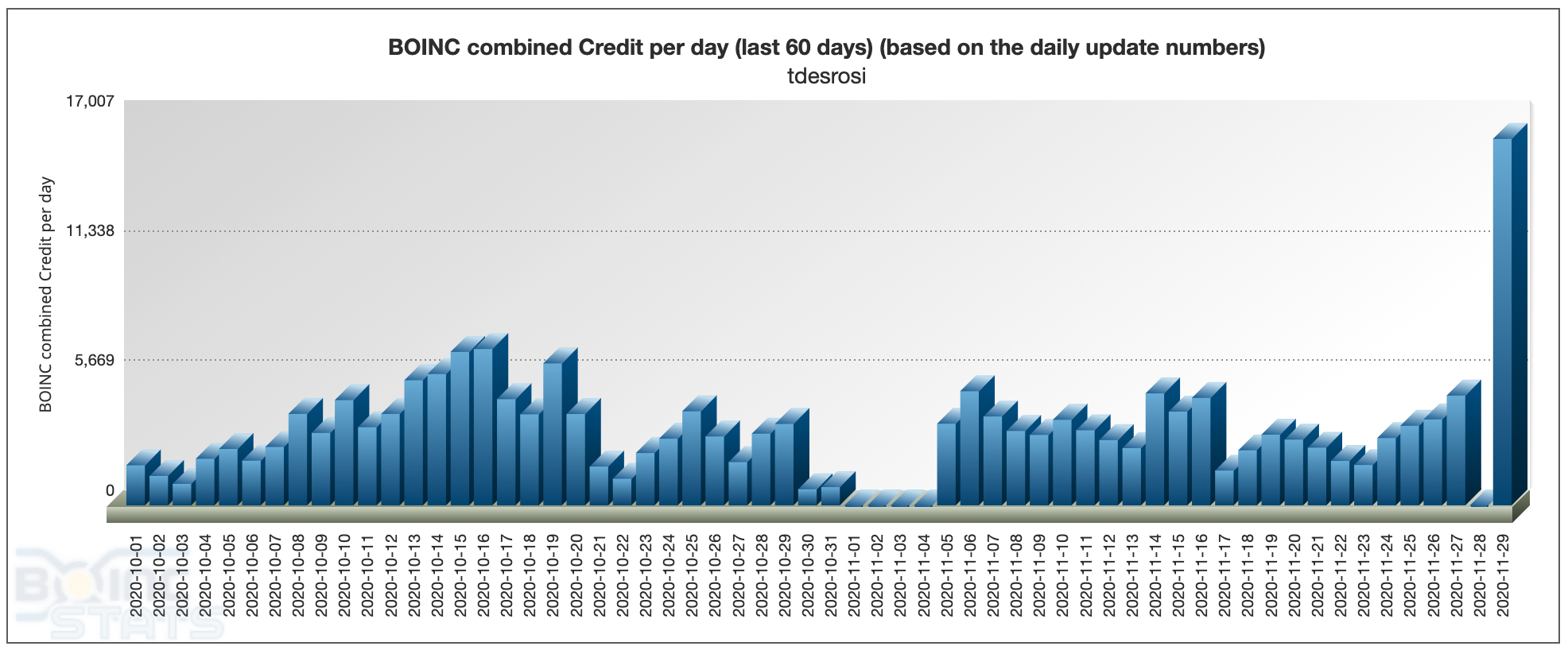
After several weeks of troubleshooting the last few computers I initially received from the trash, I was able to revive two of them to complete my server rack. In total, these four computers are capable of 400 GigaFLOPS of compute power (400 Billion Operations per Second). Now, counting all of the computers I have on my network yields a total compute capability of over 1 TeraFLOP, or 1 Trillion Operations per Second! All of these computers are configured to perform work for the distributed computing project, Rosetta@Home. If you have extra compute to lend, please consider getting involved!
The process of repairing these computers was a learning experience that often tested my patience. For example, after weeks of troubleshooting, it turned out that one of the computers just had dusty DIMM slots that didn’t make proper contact. That, however, didn’t stop me from buying after-market RAM for the machine. The other computer was trickier to fix, as I initially thought it was an error with the motherboard. I borrowed an oscilloscope from my university and began testing, which is how I discovered that the issue was not logic-board related at all. I had a rogue power supply.
What was supposed to be a 3.3-Volt wire coming from the power supply actually measured zero volts, which prompted me to purchase a cheap, basic, ATX power supply. It solved the problem, and luckily none of the motherboard components were damaged in the process!
Now, with 4 additional GPU-accelerated computers on my account, I’m already seeing a notable boost in productivity. Check out my Rosetta@Home project statistics! To date, the supercomputer has already doubled my rank amongst all users in the world. Rosetta@Home is COMPETITIVE, and I love it!
 BOINC Credit (Jobs Completed) Per Day. Notice the initial boost in performance on November 5th, when the first two computers were added to the supercomputer array, and November 29th, when all four computers went live. That’s a 200% increase!
BOINC Credit (Jobs Completed) Per Day. Notice the initial boost in performance on November 5th, when the first two computers were added to the supercomputer array, and November 29th, when all four computers went live. That’s a 200% increase! I’ve loved this project from start-to-finish. I’ve learned so much about computer engineering and network infrastructure, and I can’t wait to see what this hobby evolves into! The only downside to this project: My notably slower internet due to the constant sending and receiving of data to and from the Rosetta@Home servers.
…But it’s worth it for science.
Back to Projects